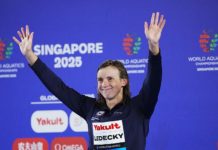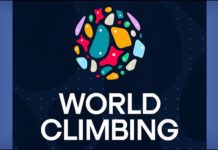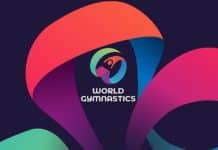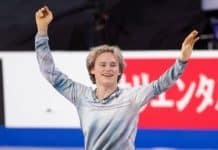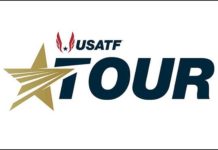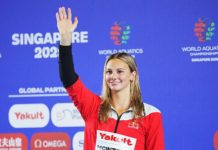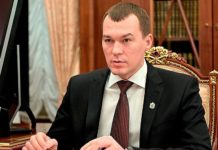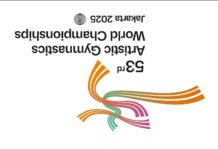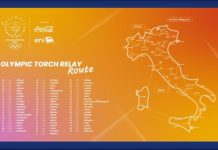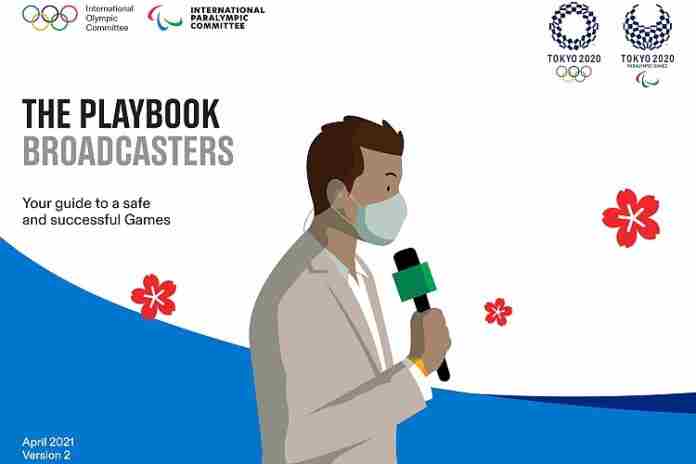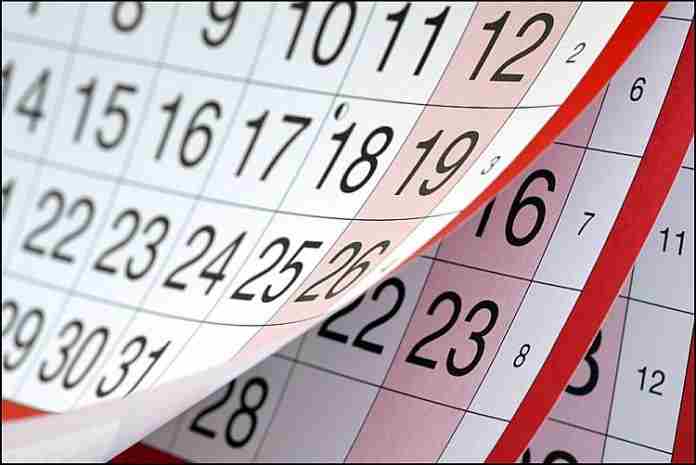Four new Tokyo 2020 “playbooks” were delivered on Friday as promised, for International Federation staff, press, broadcasters and “marketing partners,” with most of the same, glum verbiage used for the athlete playbook released on Wednesday:
● “These Games will be different and we all have to adjust. In addition to no overseas spectators, you will face restrictions to the places you can go, as well as hygiene and physical distancing measures. These ‘safety first’ decisions are there to protect you, all Games participants and the people of Tokyo and Japan.”
● “We trust that the measures laid out will mitigate the risks and impacts involved in participating in the Games, and we fully count on your support to comply with them. However, despite all the care taken, risks and impacts may not be fully eliminated, and therefore you agree to attend the Olympic and Paralympic Games at your own risk.”
The primary requirements are the same as for athletes, but with a significant exception of not being in the Olympic Village. So, the requirements include:
● Download and use the “Contact Confirming Application” app;
● Monitor and record temperature for 14 days prior to travel;
● Take two separate Covid-19 tests within 96 hours prior to departure;
● Take a Covid-19 test on arrival;
● Quarantine for three days, unless you test negative each day;
● Wear a mask essentially all the time other than during meals or sleeping;
● File and follow a detailed “Activity Plan” for the first 14 days in Japan;
● Don’t use public transport; eat only in designated places (preferably at venues);
● Don’t visit public venues such as bars, restaurants, gyms and shopping centers.
Staff who are in “regular contact” with athletes must be tested daily; for those with some contact, testing every four days will be required, or seven days if not in contact with athletes.
Access to venue seating for sponsors is only through the “dedicated pre-booking app to reserve seats in Olympic/Paralympic Family stands and lounge areas at competition venues. Only Olympic and Paralympic Family members with a valid prebooked seat for the ongoing session will be able to access the stands and lounge areas.”
The International Federations playbook had some added restrictions or suggestions:
● “Activities will be held online or in open air spaces where possible”
● “Transparent acrylic panels will be installed at the desks”
● “Printing documents is not recommended. If you do need to print something, avoid sharing documents with others unnecessarily”
The playbook for Press and photographers confirms the very difficult conditions envisioned for Tokyo 2020:
● “Requirements for physical distancing in the venue media centres, press tribunes, press conference rooms, mixed zones, photo positions and media lounges have resulted in a significant reduction of capacities for all press and photo areas.”
Specifics on the actual reductions of seating and spaces were not provided in this edition.
● “As a result, a booking system for daily access to competition venues will be in place throughout the Games that will require every member of the accredited Press to make a daily request in advance. Requests will be approved in accordance with the venue capacity for the different press and photo areas. …
– “Requests can be made by venue, day and (where applicable) session
– “Once the application is processed, an approval e-mail will be sent to the applicant
– “The e-mail will be checked at the entry of the venue and admission will be allowed upon
presentation of the confirmation email and an accreditation card. If the application is not successful, a ‘not confirmed’ notification will be sent
– “Those with E-accreditation can book up to 10 sessions every day”
● “All press conferences will be made available online via a dedicated platform. Live Q&A will be also managed online for the Olympic Games.”
● “The daily IOC/Tokyo 2020 press briefings at the [Main Press Center] and all medal events press conferences will be available in different languages, and streamed live on the Info system. The feed will be archived in the system for ‘on demand’ consumption and the file will be downloadable in the original language.”
● “Access to the [Olympic Village] mixed zone will be permitted only to E-accredited Press who have a pre-booked interview. A booking will need to be made in advance on site at the Olympic and Paralympic Venue Media Centre or by emailing the Venue Media Manager.”
An accommodation for media accredited for Tokyo, but who will not be traveling to the Games, has been made, and “can request an access token to myInfo from their country of residence” by writing directly to the Tokyo 2020 Press Operations team.
The playbook for the rights-holding broadcasters includes many of the same rules:
● “Capacities in venue broadcast facilities will be adjusted in order to comply with the adopted physical distancing measures. This includes mixed zones, dedicated camera positions, announce positions/occasional presentation positions (OPPs), commentary positions, observer seats and broadcast compounds, as well as at the mixed zone of the Olympic and Paralympic Village Plaza and the TV studios.”
● “All ENG mixed zone positions, ENG camera positions and observer seats will require booking through [Olympic Broadcast Services].”
● In the commentary positions, “At least a one-metre distance will be maintained without enlarging the overall footprint” and “Clear acrylic partition will be installed where physical distancing is not possible.”
● In the venue mixed zones, “At all venues, a maximum crew of two people will be allowed at all dedicated TV positions (MZ01). In radio positions (MZ02), only one person will be
allowed” and “The use of a boom microphone (or an alternative suitable solution) will be mandatory in order to ensure the two-metre distance between athletes and interviewers is maintained.”
● “Interviews with athletes should last for no more than 90 seconds.”
Similar distancing requirements are mandated everywhere, including the International Broadcast Center, Village mixed zones, and team transport loading zones. Look for lots of taped-off markers on the ground, indicating suitable distances for interviews.
Broadcasters, in a sense, have already specified which events they will cover since commentary positions must be ordered more than a year ahead of time. But the mixed zones, once a fairly casual meeting place between athletes and media, will be among the most complicated places in the Games this summer with distancing requirements, time constraints and everyone trying to their job in near-impossible circumstances.
A third version of the playbooks will be delivered in June, with more specifics and perhaps, more restrictions.
Veteran Games attendees, especially among media, often see comical “I survived [name of Games]” T-shirts near or at the end of any Olympic or Winter Games. In 2020, they will be well earned.


